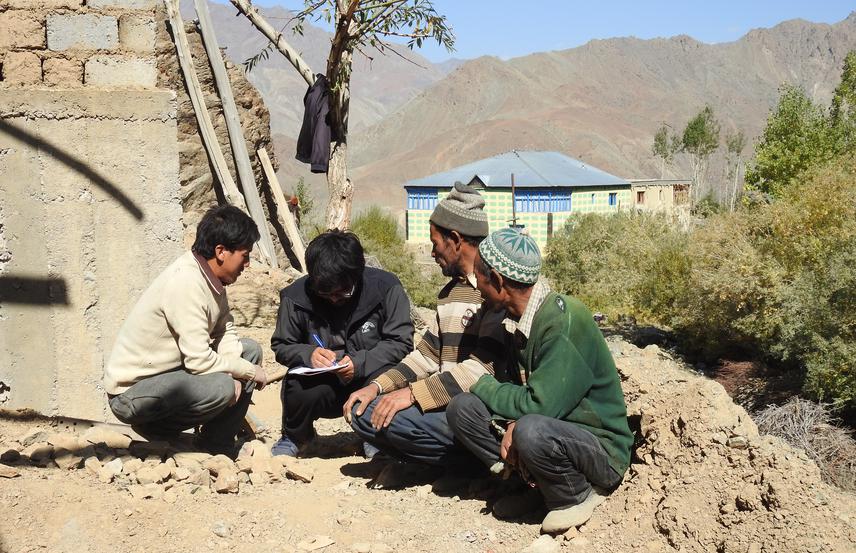Iftikar Ali
This project is an initiative towards the conservation of mammals in Kargil, Ladakh Tran-Himalaya of the Indian Sub-continent by reducing carnivore –human conflicts, protection of prey species, awareness, education programs and Participatory Rural Appraisal techniques.

During Conflict surveys and discussing the major problems and losses faced by the local people by Wild Carnivores.
This project is a part of planning wildlife management, conflict mitigations and conservation approaches in Kargil district of Ladakh trans-Himalaya. Recent studies conducted by various researchers, organisations and my last work on the carnivore - human conflict in North eastern Kargil concludes that, much damage to the wildlife of the said area had caused due to lack of awareness and knowledge of the importance of wildlife among the local people. If right approach is taken and the people are educated in terms of the consequence in depletion of the population of wildlife, it would be a milestone in the conservation of many endangered species of the region, and the Himalayan region as a whole.
The Prey Species (Mammals) to be impacted during the Project –
1. Ladakh Urial (Ovis vegnei) IUCN status - EN
2. Asiatic Ibex (Capra ibex sibirica) IUCN status - LC
The Carnivores to be impacted during the project are-
1. Snow Leopard (Panthera uncia) IUCN status - ER
2. Himalayan Brown Bear (Ursos arctos isabellinus) IUCN status – CR (in its range)
3. Tibetan Wolf (Canis lupus chanku) IUCN status - LC
4. Tibetan Fox (Vulpes vulpes) IUCN status - LC
The expected outcomes of the project are –
1. Information on Carnivore- Human Conflict in Kargil, Ladakh.
2. Establishment and functioning of Wildlife Nature Clubs (WNCs) in various critical and conflict prone villages across the region for on ground conservation actions.
3. Implementing conservation awareness for motivations through education outreach across different schools and capacity enhancement of local field staffs.
4. District Level Workshops cum Awareness Programs for knowledge enhancement about the importance of wildlife among the people.
These mammals are an integral part of socio-cultural, folklores and traditional-sport of the people inclusive of inhabitants in many villages of the district.
Poaching is considered to be the main reason for decline of population of the prey species, which has resulted in Livestock attacks by large carnivores and subsequently retaliation-killings. Lack of Protected-areas has also been reason for the unsafely of these species. The inhabitants of the region are not aware of the wildlife conversations. So I am motivated to conduct this project, which is well emphasized by the State wildlife-Department and other local NGOs.